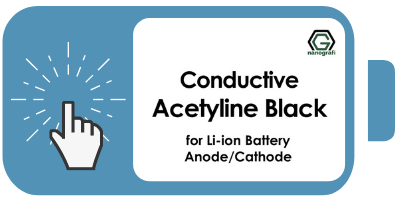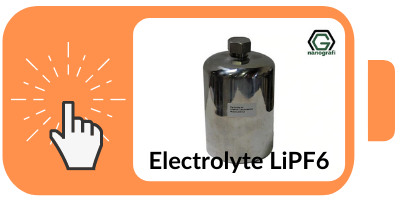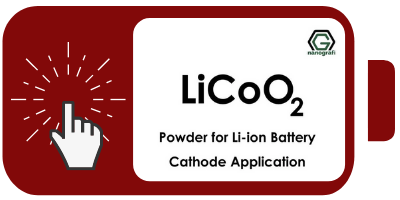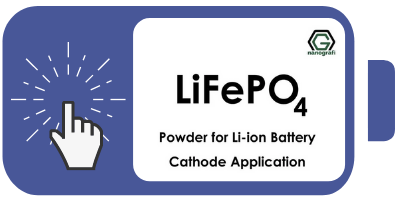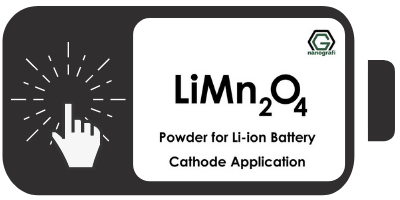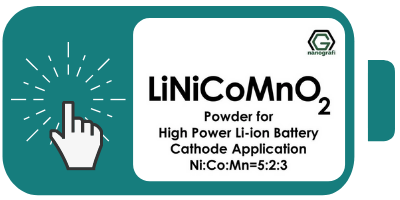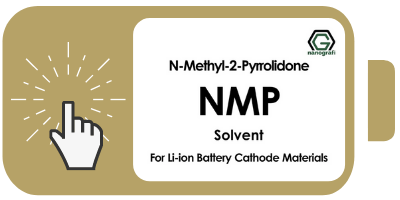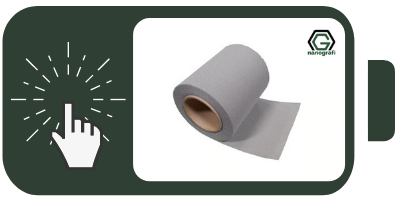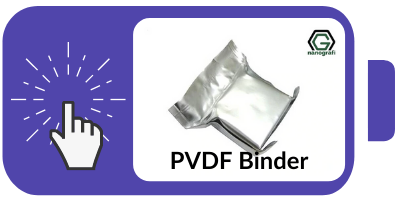Battery Cathode Materials
The importance of batteries is undeniable, whereas the most important part of batteries is the cathode. The reason for that is very simple and obvious. The main factor that defines the battery is the voltage level. The elements that maintain and are responsible for the regulation of voltage include the quality of electrolyte as well, but the cathode is mainly responsible for the regulation and maintenance of the voltage, decide the level and quality as well. In this article is discussed the materials and the characteristics of each of the materials. The properties of the cathode are dependent on the characteristics and nature of the material. These properties include the thermal expansion coefficient, thermal and electrical conductivity, resistivity, ability to discharge at the earliest, mechanical strength, etc.
Battery anode materials are explained in detail in another article, which you can access here.
Different components, electronic gadgets, devices and other loads of things have batteries as the sole part of their operation. The importance of the battery cannot be denied, especially in this modern digitalized world. A battery is a combination of more than one cell in series or parallels to obtain the required customized level of voltages and power required. The battery voltages can be made available in the multiples of 1.5 as a single cell has a voltage potential of 1.5 V across it. Others are made connecting these values of voltages in series or parallel according to the requirements.
Anode and Cathode are the two terminals of a battery, which when submerged in an electrolyte and polymer membrane separating them gives the rated voltages of the battery. The positive one is called cathode and the negative one is called anode. The reason for the polarity is deficiency and enrichment of electron on respective of the electrodes. The redox reaction at the junction of the two electrodes and electrolytes. These redox reactions are reversible. They go one way while charging and the reaction proceeds in reverse on the application of a passive element on the electrodes. There are a lot of options when it comes to the materials used for the construction of the electrodes, either of it, the electrolyte or the general material for the container. In this article, we will discuss the materials, widely used for the construction of the cathode, the positive electrode of the battery.
Desired characteristics of the material for Cathode
To be appropriate for the choice of manufacturing cathode, the following are the desired characteristics for the perfect material:
Efficient oxidizing agent
As mentioned earlier, redox reactions take place readily and continuously. The cathode is responsible for carrying out the oxidation in the container of the battery. The oxidation is carried out the cathode, hence it must be a material that supports and catalyzes the oxidation process. Oxidation is the addition of electrons to the substance.
Nominal Capacity
Nominal capacity is the rated capacity, the fully loaded capacity or the maximum effect of the result of a facility. The nominal capacity will decide not only the maximum output voltage of the battery, but it also improves the efficiency and quality of the voltage regulation.
Stable when in contact with electrolyte
Every material is not suitable for every battery in the world. In the construction of the battery, the electrodes are to be submerged in the electrolyte. If the material of the electrode is reactive to the electrolyte, the reaction takes place and no electrode will be left. Hence, disturbing the operation of the battery.
Electrical conductivity
Good electrical conductivity is the first and most desired characteristic of the electrode. The electrons present inside the electrolyte or inside the battery must be allowed to flow out to the load via a good conducting challenge. Hence, good electrical conductivity always worth it.
Useful working voltage
The cathode being the positive electrode decides the voltage level. The material must be good to provide a voltage level that is enough to be used in the required space. It must not preferably drop any voltage across it.
Self-Discharge
The electrode must not remain in charge for safety purposes. Instead, it must provide the current and once the load is removed, it is preferred to discharge on itself, coming to the neutral state.
Ease of fabrication
The material must be reliable enough and support easy fabrication of insulation or other safety material, to avoid any unwanted harm.
Materials used for the manufacturing of Cathode
Let get into details and discuss the materials used these days for the manufacturing and production of the cathode at large scale. The details are as:
Aluminum Foil and Tab
These are thin sheets made of Aluminum used for the substrate of the cathode. They are a good electrical conductor with enough mechanical strength, resistivity to temperature and current and good thermal expansion co-efficient. The material must be more than 99% pure Aluminum. The tensile strength of the Aluminum is more than 150N/m3 and a uniform density of 3.741 g/cm3. These are also available in the form of tabs 48 mm in length and 4 mm wide, with maximum loading current of 3 A.
Conductive Acetylene Black
Acetylene is a derivative of carbon, which is itself an excellent conductor and used extensively in electrical devices, gadgets, and other such applications. The ash content and heating loss are both less than 2% with grid content less than equal to 0.003 % with particle size 35~40 nm. These are used with respective electrode active material to produce that particular electrode.
Electrolyte Lithium Hexafluorophosphate (LiPF6)
Electrolyte Lithium Hexafluorophosphate is a crystalline powder white in color. Electrolyte possesses an important role in lithium-ion batteries (LIB) as the medium to carry lithium ions between the two electrodes of the battery. High purity and battery-grade electrolyte solutions are thus crucial for lithium-ion battery performance. The most common LIB electrolytes are derived from solutions of the salts of lithium-ion, such as LiPF6 in non-liquid solvents, such as solvent blend or alkyl carbonates with low prices and high purity.
The electrolyte solution is one mole of salt in a liter of solvent in a ratio of 4:3:3 by volume of EC + DMC + DEC. The maximum voltage is 4.5 V. The electrolyte is sealed in a container of stainless steel.
Lithium Cobalt Oxide (LiCoO2)
Lithium Cobalt Oxide (LiCoO2) is a crystalline powder, black in appearance with a specific area of 0.2~0.5m2/g and tap density over 2.8 g/cm3. The nature of Lithium Cobalt Oxide (LiCoO2) is basic with pH ranging from 9 to 11. The cell coin capacity of a cell of voltage level ranging from 3.0 V to 4.3 V is more than 151mAh/g with moisture level less than 0.1 %.
Lithium Iron Phosphate (LiFePO4)
Lithium Iron Phosphate is a powder form material used to synthesize cathodes for acid-based and Lithium-ion battery. It has a tap density of 1.132 g/cm3 and a resistance of 114.9 Ohms.cm. The materials contain 1.29 % of carbon with slightly basic nature at a pH of 8.92. The electrodes made from Lithium Iron Phosphate has a discharge efficiency of more than 97 % at the first capacity of 155.5 mAh/g.
Lithium Manganese Oxide (LiMn2O4)
This is also a powder form material for the synthesis of the cathode for batteries consisting of different metals which include Nickel, Iron, Sodium, Copper and metal impurity of less than 25 ppb with moisture content of less than 0.2 %. Lithium Manganese Oxide has a melting point of 400o C, the specific area from 0.4 ~ 1.0 m2/g, tap density ranging from 4 – 5 at standard room temperature and is insoluble in water.
Lithium Nickel Manganese Cobalt Oxide (LiNiCoMnO2)
As the name indicates, this physically powdered material consists of many metals in a particular proportion. These metals include Nickel, Manganese, Cobalt, Lithium, Sodium, Iron, Copper and a part of moisture or water. It has the first discharge capacity of 154.1 ~ 154.8 mAh/g at an efficiency of 87 %.
Read More: Use of Nickel Materials in Battery Applications
N-Methyl-2-Pyrrolidone (NMP)
Apparently, N-Methyl-2-Pyrrolidone is a colorless transparent liquid, with a molar mass of 99.13 g/mol. It possesses a melting point of -24 oC and boils at 202 oC with 1013 hPa. N-Methyl-2-Pyrrolidone has a flashpoint of 91 oC, the ignition temperature of 245 oC and vapor pressure of 0.32 hPa at standard room temperature. It is soluble in water, ether, alcohol, ester, aromatic hydrocarbons, ketone, and halogenated hydrocarbons.
Nickel Foam
Nickel foam is an exceptional anti-corrosive material with a porosity of 95 % consisting of 80 – 110 pores per inch. It is extensive on both sides of the length and width to some extent. These are used to make cathode for long term use and less maintenance required.
PVDF Binder
PVDF Binder for battery’s cathodes, which are mostly deployed in the manufacturing of lithium-ion batteries to maintain the active materials and their particles together in place and in contact with the existing collectors. It brings many benefits to the industry of Li-ion battery when it is used as a binder in the electrode formulation as well as in the separator design.
Read More: PVDF binder for battery
TIMCAL SUPER C45 and C65 Conductive Carbon Black
These two are the two forms of conductive black carbon with a difference in the ratio of the contents present in conductive carbon black. Due to difference in the ratio of the contents of the materials, it causes some differences in the properties and the resulting products as well. they have different values for volatile content, toluene extract, ash content, grit content for different micron size, moisture, density, Sulphur content, and metal elements.
TIMCAL Super P Conductive Carbon Black
It is the most graded level of conductive carbon black, ‘Super P’. it is used mainly as a stabilizer against UV, rubber reinforcement, black pigment, etc. It has a high density of 160 kg/m3.
As discussed, there are too many of the options to select from for the synthesis of the cathode for a battery. All the materials possess different characteristics and hence different characteristics can be introduced when the different materials are deployed in the construction of the cathode. The ideal characteristics for the materials to be used in the construction of the cathode for batteries are also defined and described. One may adjust according to the requirement of the battery, its voltage, and load.
Recent Posts
-
Nanocomposites in Food Packaging
The utilization of nanocomposites in food packaging represents a significant advancement in the fiel …19th Apr 2024 -
What is the Difference Between 7075 and 6061 Aluminum Alloy?
When comparing 7075 aluminum alloy to 6061 aluminum alloy, it's essential to understand their disti …5th Apr 2024 -
Iron-Air Batteries: The Ultimate Guide
Iron-air batteries represent a significant breakthrough in energy storage technology, offering a sus …29th Mar 2024


